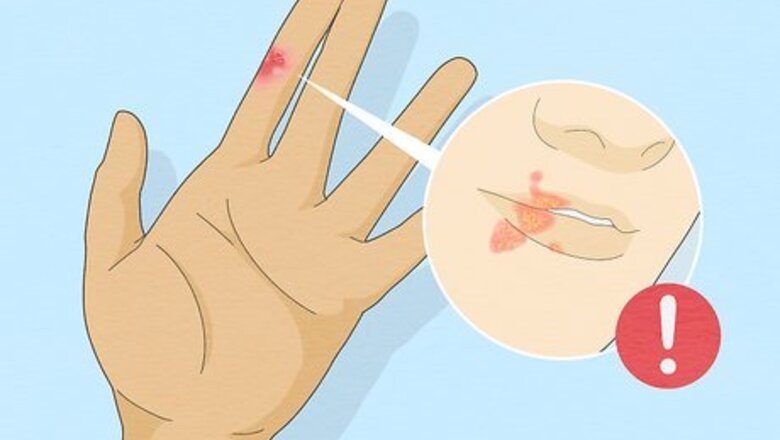
views
- Check for common symptoms of whitlow including unusual pain, tingling, or numbness in your finger and the appearance of painful blisters or fluid-filled vesicles.
- Talk to your doctor within the first 48 hours of your symptoms appearing to be prescribed antivirals to treat the infection.
- Though you should never pop your blister at home, ease any pain or discomfort by applying an ice pack or soaking your hand in warm water for up to 20 minutes.
Diagnosing Whitlow
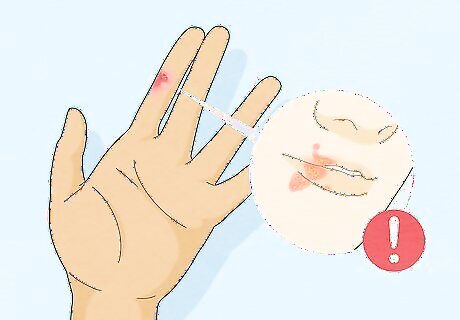
Recall if you’ve been in contact with someone who has herpes. Whitlow, also known as herpetic whitlow, is a skin infection that’s caused by the herpes simplex virus (HSV), a common and highly contagious virus. Whitlow usually causes painful blisters to appear on a person’s fingers, with some rare cases also causing blisters to appear on a person’s toes. If you’ve come into contact with someone who has HSV, it’s possible that you may have contracted the virus, especially if you came into direct contact with the blisters caused by HSV. HSV most often causes painful blisters to appear around a person’s mouth (oral herpes) or around their genitals (genital herpes). There are 2 types of HSV: HSV-1 and HSV-2. HSV-1 commonly affects the face and often causes cold sores (painful blisters on the lips), whereas HSV-2 tends to cause painful genital blisters. HSV-1 can spread through kissing or oral sex, while HSV-2 can spread through skin-to-skin contact with infected genitals. HSV can have a long-dormant period. There’s a chance you may have contracted herpes long ago, but the virus may have stayed dormant in the nerve cells. Being stressed or getting sick are common triggers for the activation of the virus.
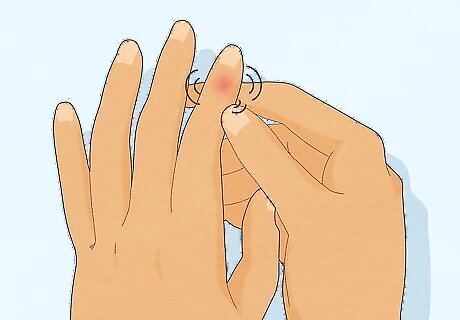
Monitor for early symptoms, such as tingling or unusual pain. In the early phase (prodrome) of any disease, you may first notice unusual sensations in one or more of your fingers, such as a localized pain or tingling sensation. These symptoms usually appear 2 to 20 days after initial exposure. Other possible symptoms include: Fever Fatigue Numbness in the infected area Tenderness around the infected area Herpetic whitlow can also appear on your toes, though it’s uncommon.
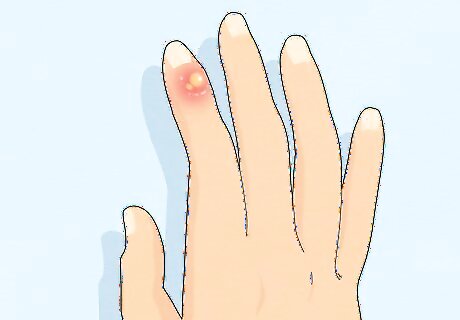
Note any painful blisters or fluid-filled bumps on your finger. Once the initial prodrome phase has passed, you’ll see more specific symptoms that clearly point to whitlow. These include swelling, redness, or a rash around the infected area, as well as fluid-filled vesicles that usually form in a honeycomb-like group. In many cases, whitlow only affects one finger, though there have been cases where people have had multiple fingers affected. The vesicles may rupture and release a white, clear, or bloody fluid. Ulceration, or a break in the skin, may develop later. These vesicles may merge and take on a black/brown color. The skin around your nail may also darken to a red or purplish color. Other symptoms include enlarged lymph nodes (lymphadenitis) around the elbow (epitrochlear) or armpit (axillary) and swelling of the hands, Symptoms usually resolve within 2 to 4 weeks, and the first case of whitlow is usually the most severe.
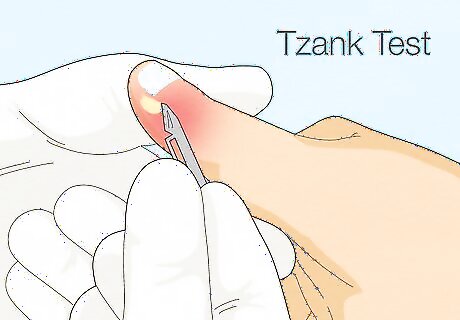
Visit your doctor to get a formal diagnosis. The doctor will likely note your symptoms and medical history—including an HSV diagnosis—when making their diagnosis. The doctor will likely swab the infected area and send it into a laboratory, and they may also order a blood test to screen for HSV. The doctor may want to test for herpes if you haven't been diagnosed with it. They may analyze your blood for herpes antibodies or order a PCR test to detect for HSV DNA. Other tests might include a viral culture, which can take 1-2 days and is usually more expensive but also more accurate, and the Tzanck test which is not as common, but can be helpful in certain cases.
Home Remedies
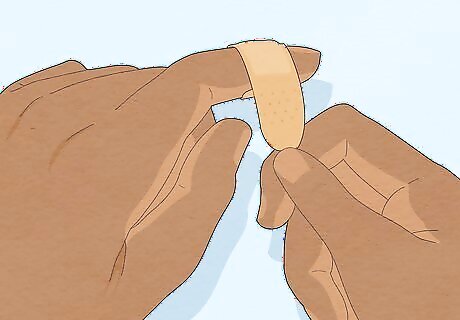
Keep the vesicles covered and avoid picking at them. Wrap your finger with a bandage or gauze to help you avoid subconsciously scratching or picking at the blisters. Picking at or bursting the vesicles can open the wound and put you at risk for a bacterial infection. Do not drain or pop the blisters: When you pop or drain the blisters, the fluid that’s released can transmit the virus to other parts of your body or other people if they come into contact with it.
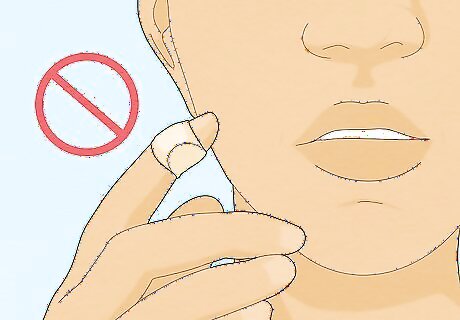
Keep your finger from touching other people or easily-infected areas. Since the virus can spread through contact, avoiding touching other people or other areas of your body with the infected area. In particular, avoid touching body parts that contain fluids or bodily secretions, such as the eyes, mouth, tongue, genitals, ears, and breasts. Avoid wearing contacts until the infection has resolved itself. Using your fingers to put in your contacts carries a great risk of spreading the infection to your eyes. If a child has been infected, ensure they’re not sucking on the infected finger or touching their eyes, mouth, or any other body area that contains bodily fluids.
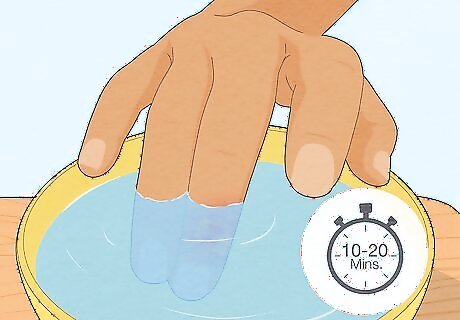
Soak the infected area to help soothe the pain. Warm water may provide pain relief from whitlow and is a good remedy if painful lesions start appearing on the infected area. Fill a container or sink with warm water that’s deep enough for you to fully submerge your hand. Soak the infected area for 10 to 20 minutes. When you’re done soaking, dry off the area completely and rewrap it in a clean, dry bandage. Add Epsom salts to the water to help soothe the pain, reduce any itchiness, and help decrease any tenderness around the infected area.
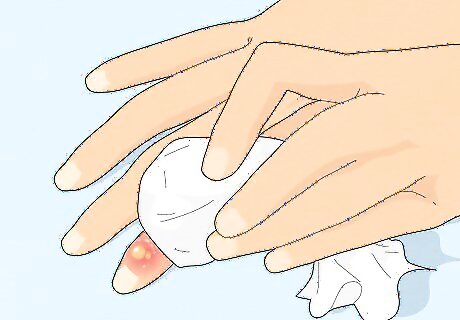
Use an ice pack to reduce inflammation. Buy an ice pack from your local pharmacy, or wrap some ice cubes in a towel and gently hold them against the infected area. The cold will numb the nerves in the surrounding area, relieving the pain. It can also help reduce any inflammation or swelling that would contribute to the pain. Never apply ice directly to your skin. Only apply the ice pack for up to 20 minutes at a time.
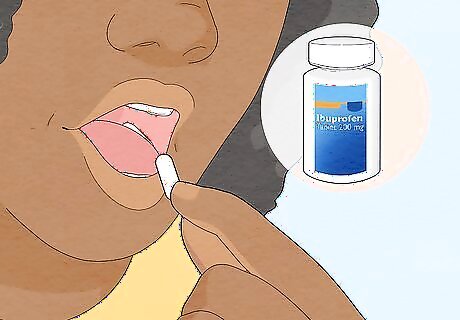
Get over-the-counter pain medication if necessary. Take over-the-counter pain medications like Advil, Tylenol, ibuprofen, or aspirin to help with the discomfort. These medications should ease some of the pain while the infection heals by reducing inflammation in the area. Talk to your doctor to see if it’s okay for you to take these medications before you purchase them. Children and teenagers with viral infections are advised not to take aspirin. There's a risk of developing a multi-organ fatal condition known as Reye’s syndrome. Instead, have them take Tylenol or ibuprofen. Take all medications as described either by your healthcare provider or on the label. Be careful not to exceed the maximum daily dose.
Professional Treatment
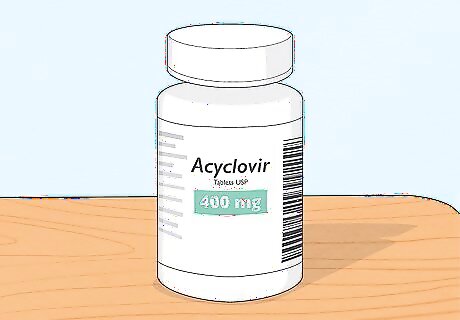
Take antiviral medication. If you’re able to get an official diagnosis of whitlow within 48 hours after your symptoms start, the doctor will often be able to prescribe you an antiviral medication. The medicine may come in the form of a topical cream or pills that you take orally. These antivirals will often work to lessen the severity of the infection and your symptoms, as well as promote faster healing. These antivirals are typically only effective within those first 48 hours, so it’s important that you talk to your doctor as soon as you notice symptoms. Commonly prescribed medications include topical acyclovir 5%, oral acyclovir, oral famciclovir, and valacyclovir. Take the medications as advised by your doctor or pharmacist. Dosages will be adjusted for children, but the treatments will generally remain the same.
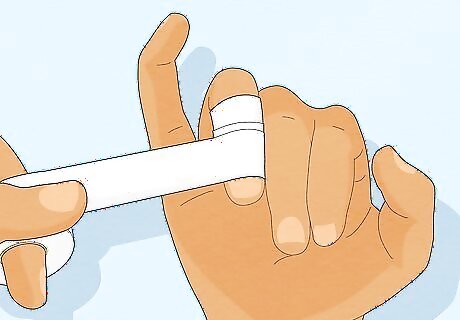
Wrap the infected area with a clean, dry bandage. Your healthcare provider may wrap the infected area with a bandage, cloth, or any form of dry wrap with medical tape. Purchase bandages or gauze from your local pharmacy to do this at home. Change the wrap daily to keep it fresh and clean. To be extra safe, your doctor may advise you to wrap the infected area and also wear a glove over it.
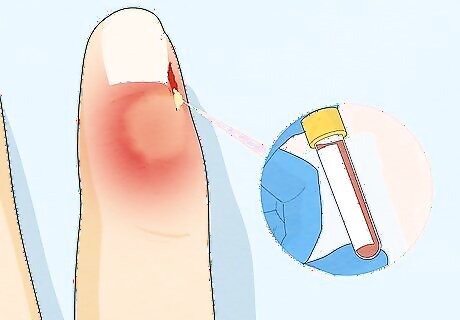
Have your doctor test for bacterial infection if your blisters popped. If you try to burst or drain the vesicles on your finger on your own, it’s possible that debris and bacteria can cause a more serious infection. Whitlow is a viral infection, but your symptoms may be made worse if a bacterial infection also occurs. This type of infection will often result in a darker discoloration, an odor coming from the infected area and blisters, and a discharge of white pus. The doctors might order a complete blood count with differential in order to measure your white blood cell count if they suspect a bacterial infection. The white blood cell count will be high if you have a bacterial infection. They may reorder this test after you've completed your antibiotic course to check for normal levels of white blood cells. This isn't always necessary if symptoms have calmed and they have no further suspicion.
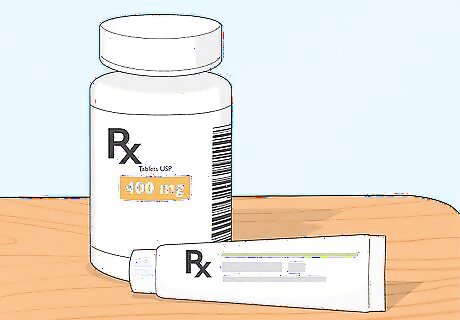
Take any antibiotics your doctor prescribes. Once the bacterial infection is confirmed, your doctor will likely prescribe you an antibiotic which can come as an oral medication or topical cream. Follow your doctor’s specific instructions and the directions on the label. Make sure to complete the full course of treatment as it’s prescribed to you, even if your symptoms seem to go away before you finish the prescription. A doctor will likely want to confirm a bacterial infection before prescribing antibiotic treatment since overuse of antibiotics can cause bacteria to adapt and become resistant to treatment.
Preventing Future Outbreaks
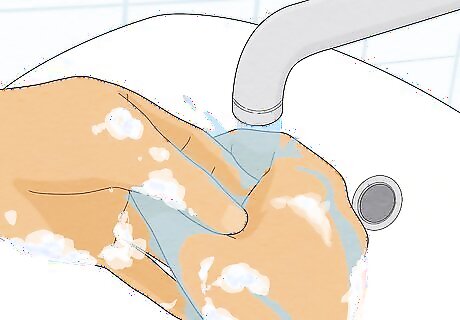
Wash your hands frequently. Washing your hands is one of the most basic things you can do to prevent getting a viral infection like whitlow. Use soap and warm water to wash your hands for at least 20 seconds multiple times throughout the day, especially if you come into contact with something that may have a lot of germs. If you think you might have come into contact with someone who has HSV, wash your hands immediately. If you have small children, do your best to keep them from sucking their thumb or other fingers, and have them also wash their hands frequently.
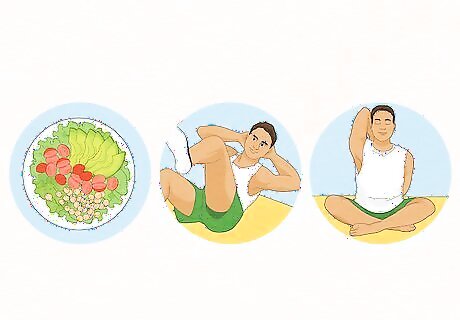
Reduce your stress levels. In some cases, stress can cause a recurrence of HSV and its symptoms. Do your best to manage your stress levels and practice healthy habits in your daily life. Some options to deal with stress include getting regular exercise, cutting back on alcohol or caffeine if you consume them frequently, quitting smoking, eating healthier, and getting a good night's sleep. Try doing meditation or yoga to help relax your body and keep your stress levels down.
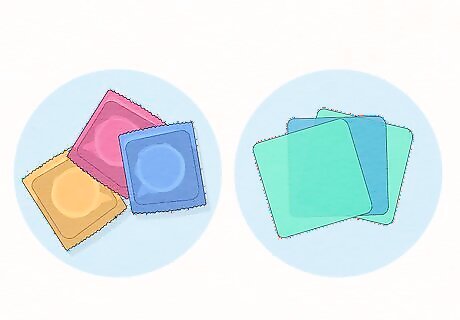
Practice safe sex. You can get the whitlow viral infection from coming into contact with another person’s infected genital regions, so be sure to always practice safe sex and take the proper precautions. This includes wearing a condom or dental dam to reduce the chances of touching the infected area and asking your partner if they have been diagnosed with HSV before having sex.
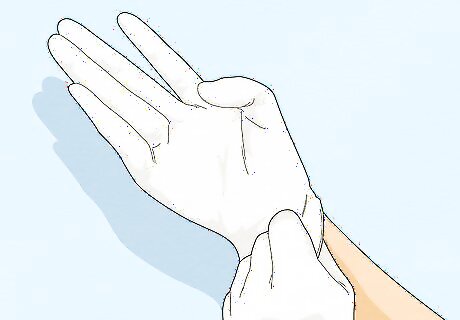
Wear gloves in a healthcare setting. If you work somewhere like a dentist’s office or medical clinic, you’re at a greater risk of coming into contact with someone who has herpetic whitlow or another form of HSV. If you need to touch their mouth, genitals, or any other area that may be infected, make sure you’re wearing gloves and washing your hands thoroughly before and after coming into contact. If you have whitlow, alert the medical personnel before getting treated by them so that they know to take the proper precautions.



















Comments
0 comment